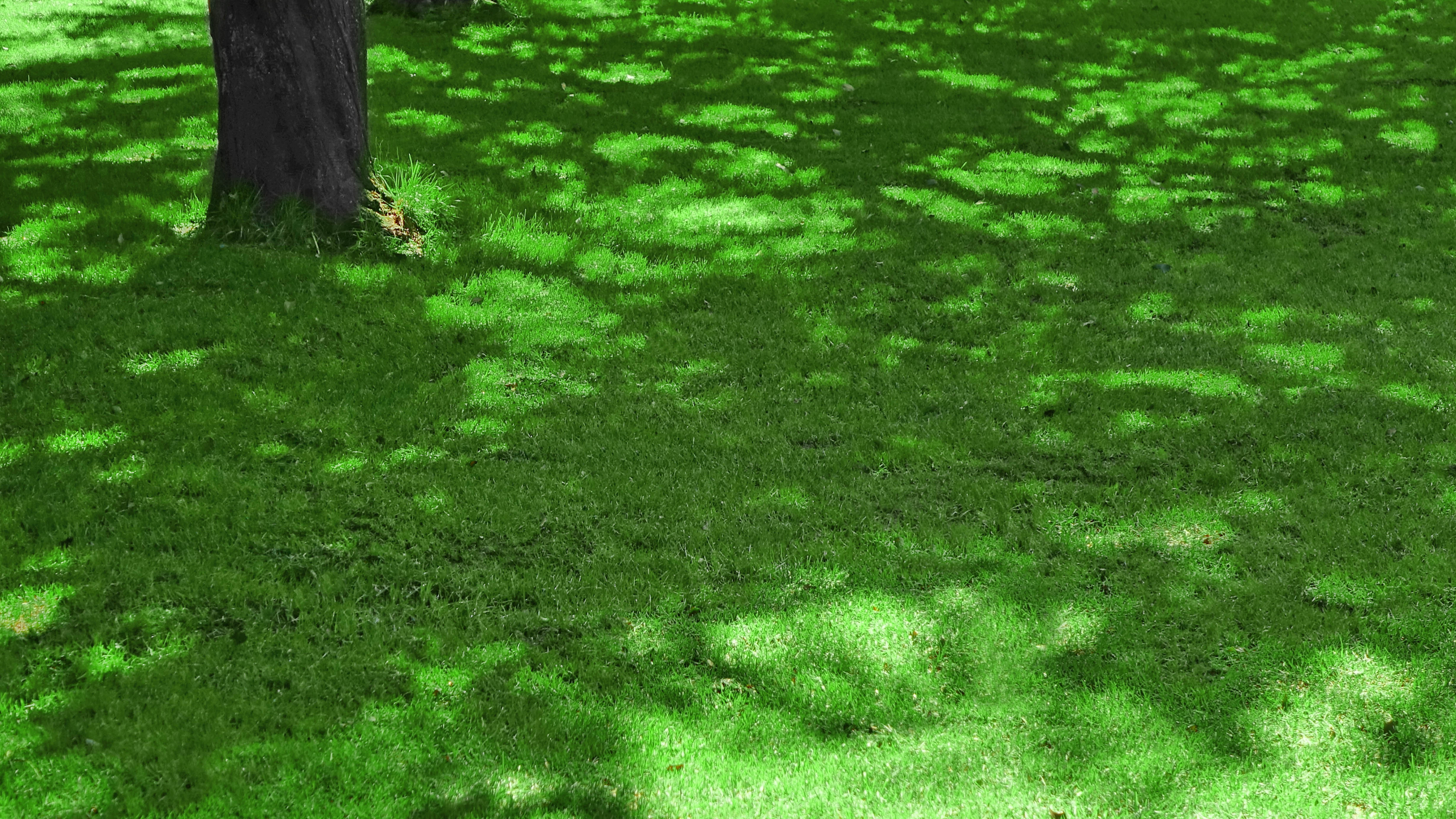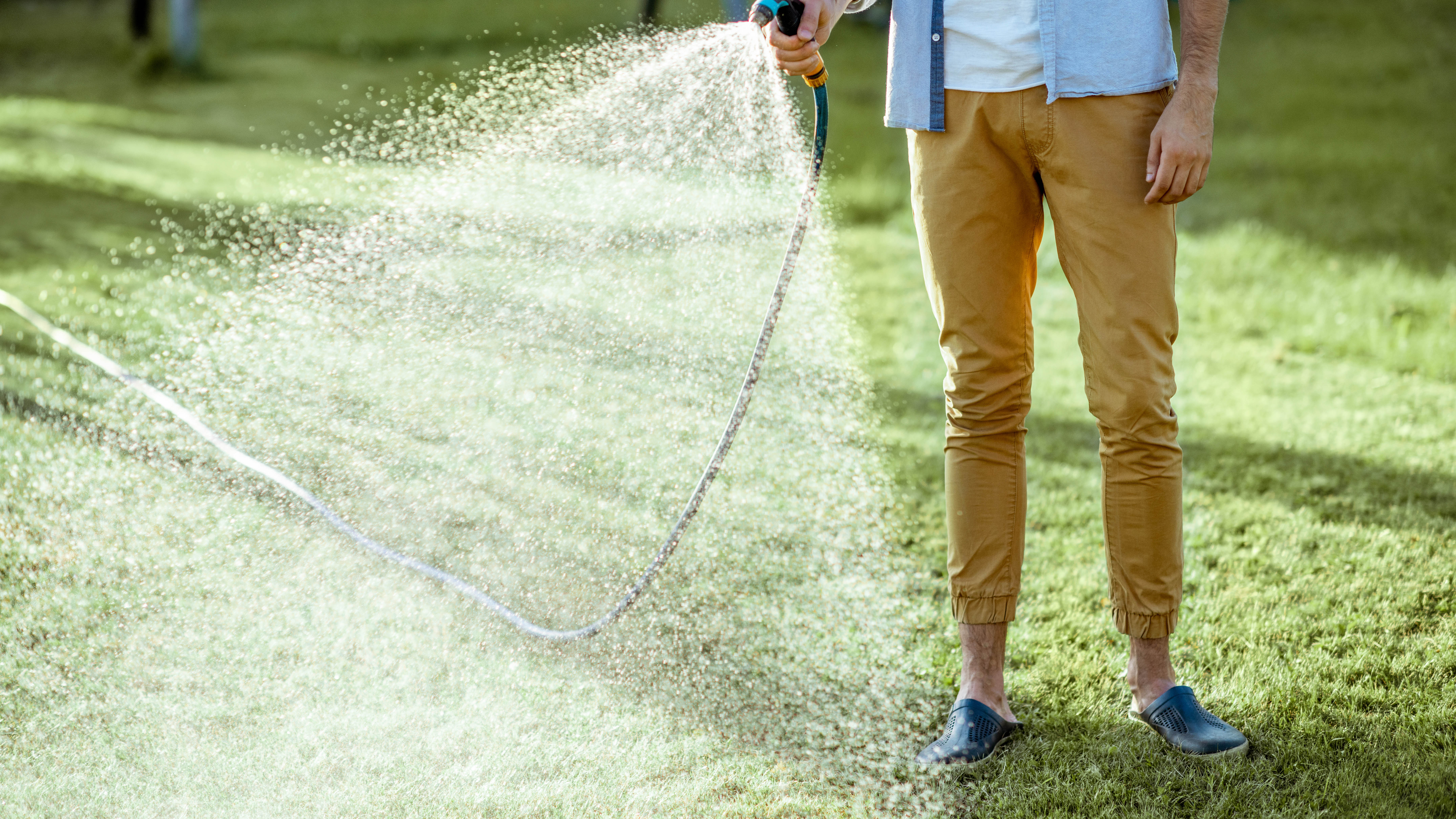How to get grass to grow in the shade — 3 expert tips

With summer on the way, it’s the perfect time to enjoy your backyard or host delicious feasts with one of the best grills. And while we're sprucing up the garden, many of us take pride in having a healthy lawn and greener grass.
But, if you have shady parts in your garden or large trees, it can be tricky to grow grass in those areas. Alongside being up against low-light conditions, your grass is competing for nutrients with trees — which would need extra attention and lawn care.
Luckily, there are ways to grow lush grass in shady areas, especially if you want to learn how to stripe your lawn and make it look bigger. We’ve asked a landscaping expert to share their top tips on how to get grass to grow in the shade, for the ultimate backyard. Just be sure to avoid these seven common lawn care mistakes.
1. Choose a shade-tolerant grass seed

When learning how to plant grass seed, it’s important to know the best grass types to grow for your region and climate. If your yard has shady areas, experts recommend planting shade tolerant grass seeds. For cool-season areas, grass types that thrive in shade include Ryegrass and Fine and Tall fescues, while warm-season grasses include Zoysiagrass and St. Augustine grass.
“Grasses such as Fescue and Zoysia can grow with less light than other grasses,” says Claire Baglin, landscaping category manager from Toolstation. “The best time to sow these is either in early spring or late autumn.”
What’s more, these are better at coping with shade, drought and low nutrient levels, and also available in both seed and turf. If you’re unsure which to opt for, check out our handy guide on grass seed vs sod — what’s best for your lawn? Experts also recommend mowing your lawn less frequently, and raising the cutting height to at least 2½ inches or up to 3½ inches.
2. Prune tree branches often

If you have larger trees, it can be challenging for grass to grow underneath its branches. One thing you can do is to cut or trim overgrown or hanging branches that are blocking the light.
Get instant access to breaking news, the hottest reviews, great deals and helpful tips.
“Prune the lower branches from the tree (crown lifting) or thinning out the entire tree canopy (crown thinning). This will increase the amount of light that reaches the grass." However, if you want to aggressively prune a tree — or remove it altogether — it's important to check with your local town, which may have restrictions in place. Otherwise, you could be looking at a hefty fine.
Another factor that could make it harder to grow grass underneath trees could be excess leaves and debris. And if your shaded areas are covered with leaves, you’ll probably want to know how to rake leaves the easy way — especially in the fall and spring. Not only will this help to encourage more light and growth, but can keep your backyard tidy and presentable. You can also reuse fallen leaves in your garden for compost or mulch, which will save you money.
Similarly, you can trim large bushes and cut hedges back by following these expert tips for shaping your hedges like a professional. Just beware of these 7 mistakes to avoid when trimming a hedge.
3. Water and feed lawn regularly

Another top tip to get grass to grow in shade is to water your lawn often, and fertilize with a nutrient-rich feed. “Lawns in the shade are best fed in autumn, just before the tree leaves begin to fall. Choose a lawn feed that is rich in potassium as this helps to keep roots healthy and allows plants to tolerate more challenging weather conditions ideal for winter.”
“As for watering, the tree can shade rainwater from reaching the lawn and even if any moisture reaches the ground, the tree roots can absorb this. Make sure to check the soil after rainfall and if it is dry give the lawn a soak.
It’s also important to note that it is actually beneficial to have a grass-free zone of at least one meter around a tree. This will prevent the grass from competing with the tree for water and nutrients from the ground. Also, even the most shade-tolerant grass seeds still need some light, so if the tree canopy is particularly thick and the area is in the shade constantly it will likely be more beneficial to shade-loving plants.”
Before you get planting, experts suggest finding out exactly how much shade your yard is getting. Typically, full shade is usually three hours or less of direct sun, while partial shade is about three to six hours of shade each day. In addition, if you’re planting perennials (plants that live more than two years), it’s best to check they're suited to your USDA Hardiness zone.
More from Tom's Guide
- Just avoid these 9 mistakes you’re making when planting grass seed
- Plus, here’s how you can make your grass greener
- Here are easy tips for cleaning pruning shears after use

As the Homes Content Editor, Cynthia Lawrence covers all things homes, interior decorating, and garden-related. She has a wealth of editorial experience testing the latest, ‘must-have’ home appliances, writing buying guides and the handy ‘how to’ features.
Her work has been published in various titles including, T3, Top Ten Reviews, Ideal Home, Real Homes, Livingetc. and House Beautiful, amongst many.
With a rather unhealthy obsession for all things homes and interiors, she also has an interior design blog for style inspiration and savvy storage solutions (get rid of that clutter!). When she’s not testing cool products, she’ll be searching online for more decor ideas to spruce up her family home or looking for a great bargain!
